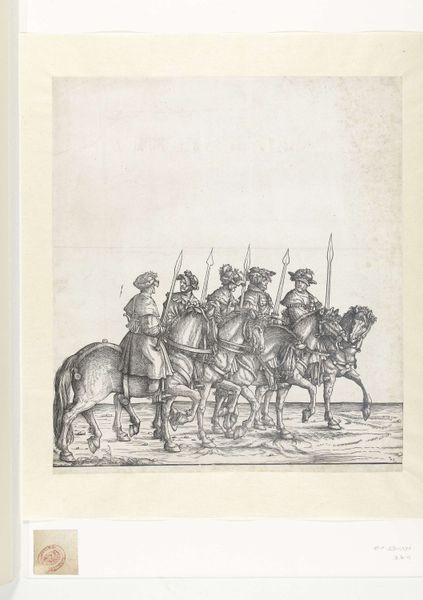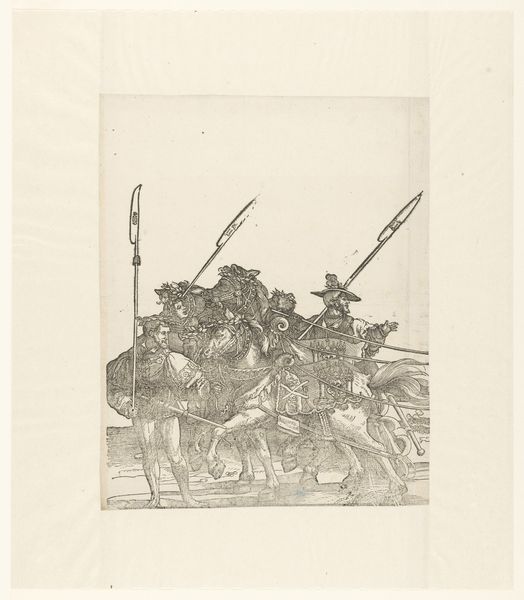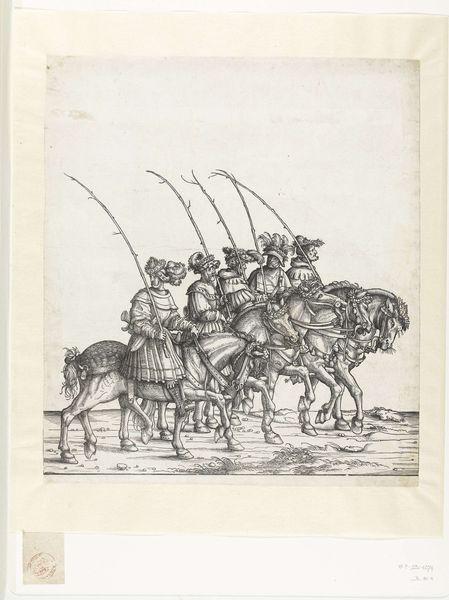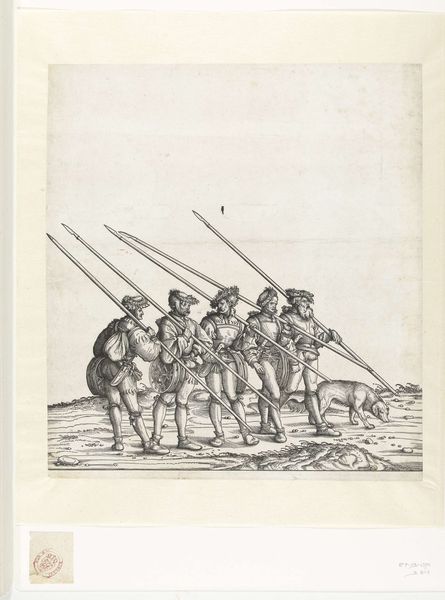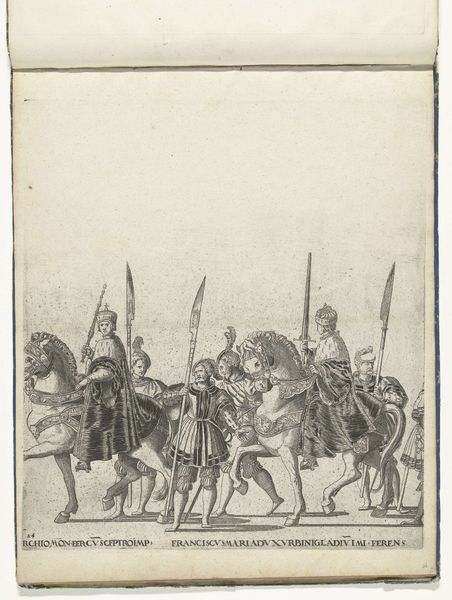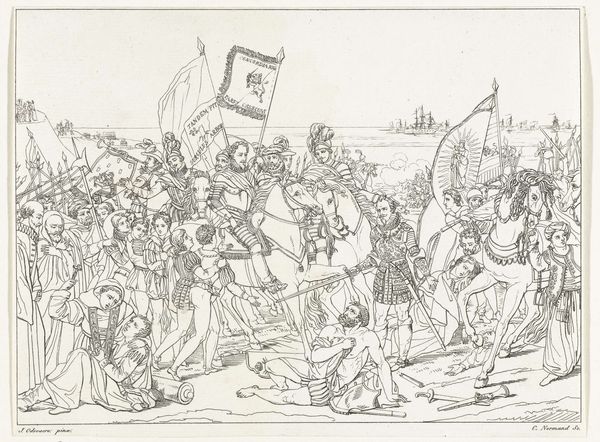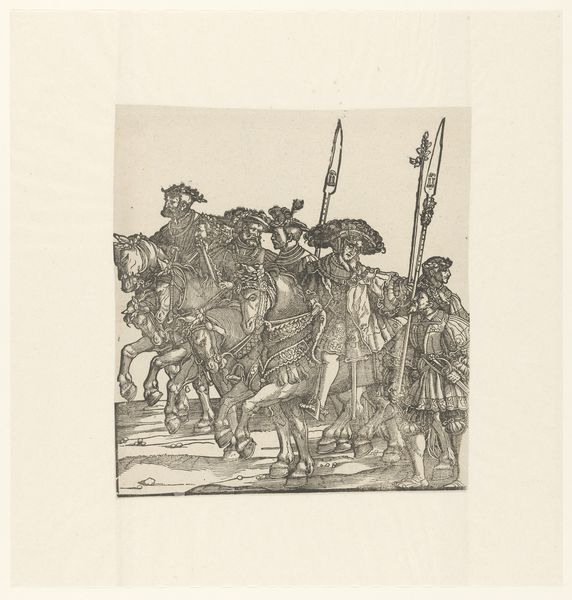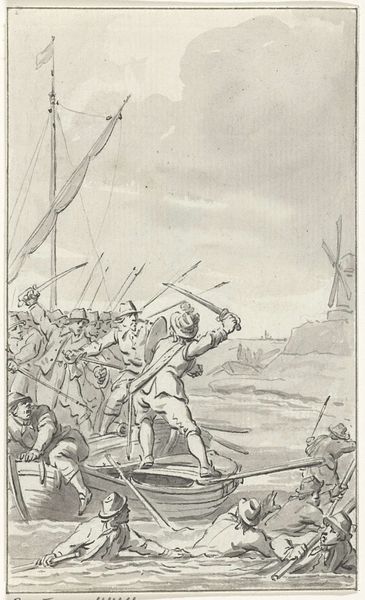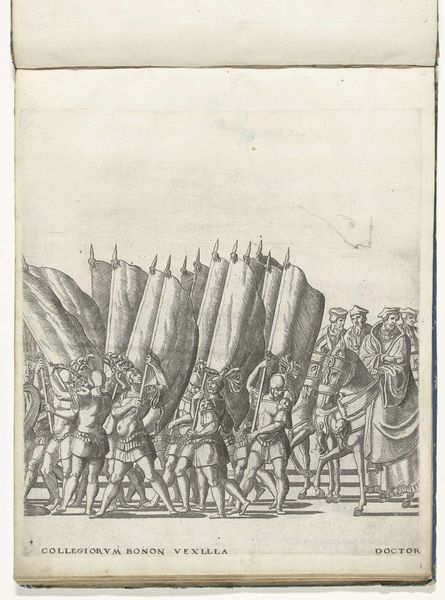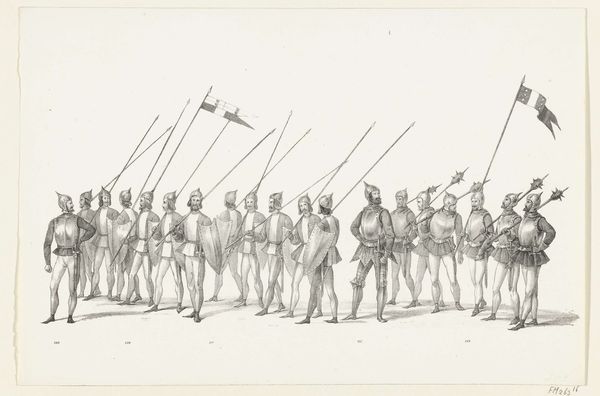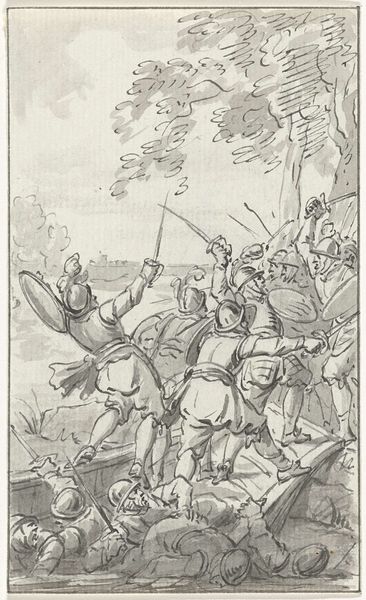
Dimensions: height 395 mm, width 350 mm
Copyright: Rijks Museum: Open Domain
Curator: What strikes me immediately about this image is its graphic starkness. It's a woodcut, a print actually, rendered in ink, depicting a rather serious hunting party. I think that "Jagers te voet bij de berenjacht" really invites discussions around class and labor. Hans Burgkmair is credited as its author. It was produced between 1483 and 1526. Editor: You know, the mood that washes over me is... well, slightly absurd. I mean, these figures, so rigid, marching in formation with their pointy sticks! It feels like a Monty Python sketch waiting to happen. There’s an almost comical intensity about them. Curator: Right, but let’s consider the historical context. Hunting wasn’t merely sport. It was intrinsically tied to power and status in the Renaissance, particularly for aristocratic classes. The ‘berenjacht’—the bear hunt—becomes a symbolic assertion of dominance, both over nature and, potentially, over other social groups. We might think of the composition too: this unified front as propaganda of some kind, Editor: Propaganda? Perhaps! I am also intrigued by their gear and apparel; each seems quite unique to the wearer. In modern days of course we could be much more unified in appearance. Curator: Precisely! The attention to detail regarding attire points toward a desire to portray a certain kind of identity—perhaps aspirational, or distinctly bourgeois versus purely aristocratic. And even though Burgkmair places them in a landscape setting, we cannot lose sight of how artificial the endeavor might really be. Editor: True, the background almost feels like a theatrical backdrop—a stage for this performance of power. But isn’t it also fascinating how Burgkmair has captured this strange blend of determination and vulnerability in their faces? They’re hunters, yes, but you almost sense a flicker of... trepidation? Curator: That trepidation adds another layer, destabilizing any straightforward reading of masculine power. Perhaps it suggests that these power structures are less stable, less secure than the image initially suggests. Their very humanity—or, frankly, their hubris— might be what allows us to look at this artwork today. Editor: In the end, despite the centuries that separate us, there’s something surprisingly relatable about that blend of ambition, fear, and maybe, just a tiny bit of awkwardness, on a quest of uncertain nobility.
Comments
No comments
Be the first to comment and join the conversation on the ultimate creative platform.
